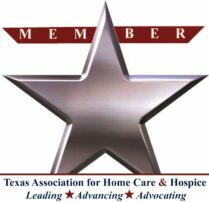Patient/caregiver was educated on precautions to be exercised while taking skelaxin as follows:
- Skelaxin use can result in episodes of headache, confusion, dizziness, and light-headedness, thus contributing to increased risk for falls and accidents. This risk with skelaxin can be even high when it is taken in high doses, when the medication is taken with a high-fat meal, or along with any other products and medications causing central nervous system (brain) depression, such as, alcohol, opioid pain medications, antidepressants, antianxiety medications, & sedatives and so, must be avoided. Avoid taking skelaxin with high fat meal. Watching closely for therapeutic response, gradually changing the dose to help optimum control of your symptoms, and avoiding taking it with medications and products causing dizziness can contribute to controlling/reducing the risk for drowsiness due to the medication. Try spacing them out accordingly, in order to prevent episodes of confusion and dizziness. Stay away from activities requiring alertness, such as, driving and operating heavy machinery, until you are used to the side effects caused by Skelaxin. Compliance with use of recommended assistive device, if any, can help towards fall and accident prevention. Starting skelaxin on a low dose and gradually increasing it to the desired dose can help accommodate to the dizzy symptoms.
- Skelaxin, especially when taken in high doses, can lead to depression of respiratory center in the brain, exacerbation of SOB, and difficulty breathing. Low oxygen levels in the body with elevated carbon-di-oxide levels can contribute to altered levels of consciousness, sedation, slow & shallow breathing, severely compromised endurance and exercise tolerance, extreme fatigue, and development of seizures. Severe cases might also lead to emergency situations, such as, respiratory arrest and can result in serious debility and death. This risk with skelaxin can be even high when it is taken along with any other products and medications causing central nervous and respiratory depression, such as, alcohol, opioid pain medications, antidepressants, antianxiety medications, and sedatives. Skelaxin must either be avoided for a better alternative or used with extra caution with close watch on breathing patterns in individuals with history of breathing issues, such as, asthma and COPD, to prevent development of any episodes of severe SOB and respiratory arrest. Notify your physician and seek emergency medical help for any difficulty breathing following skelaxin intake.
- Skelaxin use, especially in individuals with any current seizure complaint or history of seizures, can occasionally result in lowering of seizure threshold, deterioration of seizure control, and episodes of seizures. Skelaxin is avoided for a better alternative or must be very cautiously administered in individuals with seizure history and response closely monitored. Seizure precaution and management measures must be reinforced. Observe compliance with intake of prescribed anti-seizure medications, if any. Any episodes of seizures while taking Skelaxin should be immediately reported to the physician, for necessary medication changes to be considered.

